Tom Warren lives in Alaska and has traveled nearly every road of the state in his Eagle Cap 1160 truck camper. Here are Tom’s top 10 tips for truck camping in Alaska.

If you’re planning a truck camping adventure to Alaska, you’re in luck. Truck Camper Magazine’s Alaska section has no less than sixteen articles on truck camping in “The Last Frontier”. Want to know where to go, where to camp, what to pack for an Alaskan truck camping trip? There’s no better source of information than fellow truck campers who have made the journey.
Well, maybe there is one better source; fellow truck campers who actually live in Alaska. Alaskan resident, Tom Warren, has been truck camping throughout the largest state for many years and offers his experience on where to go, where to avoid, what needs a reservation, boondocking opportunities, fishing spots, frost heaves and more.
The only place that really gets overcrowded with tourists and locals is the Kenai River in the Kenai Peninsula – particularly in July.
July is when the larger runs of sockeye salmon (known as reds) migrate back to their birth streams to spawn. The Kenai River and its tributaries are their primary migration routes. Sockeye salmon are a very popular eating fish.
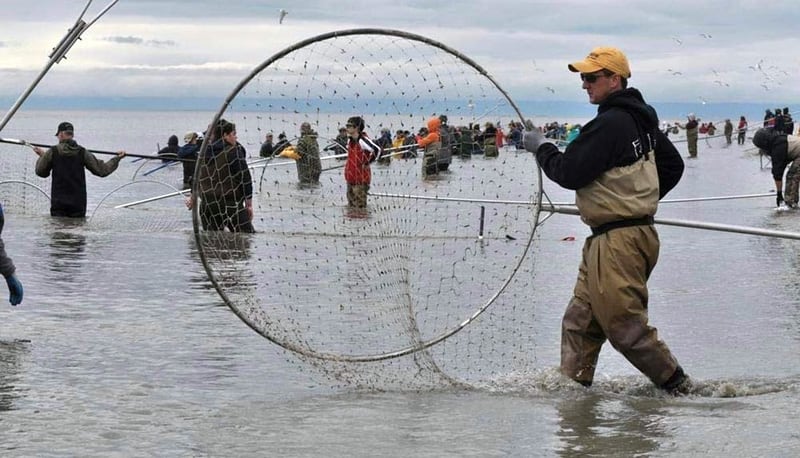
The state of Alaska allows residents to harvest sockeye salmon by dip nets as a subsistence. The size of the household determines how many sockeye salmon each household can harvest. As a result, July is a popular time for Alaskans to go to Kenai and fill their freezers for the winter.
We have driven down to Soldotna in July and have driven most the way back home just to locate a place to camp. Even the pull-offs had multiple campers in them. Every commercial and state campground near Kenai is full in July. It’s a mad house.
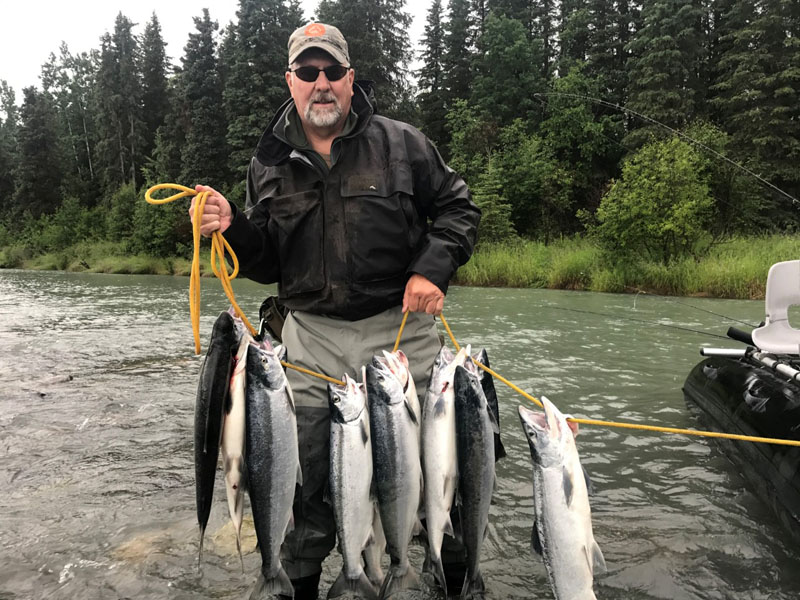
Above: Red Sockeye Salmon along the Kenai River
The Kenai Peninsula is awesome and the beauty is spectacular. If sockeye salmon fishing on the Kenai and/or Russian Rivers are on your bucket list, then plan ahead as best you can.
The bottom line is that you have to experience the Kenai Peninsula. If fishing is not your priority, then early June and August are the best times to go.
I have been on every highway in Alaska with my truck camper. If you are traveling the state, there are a lot of miles to cover and many places to visit.
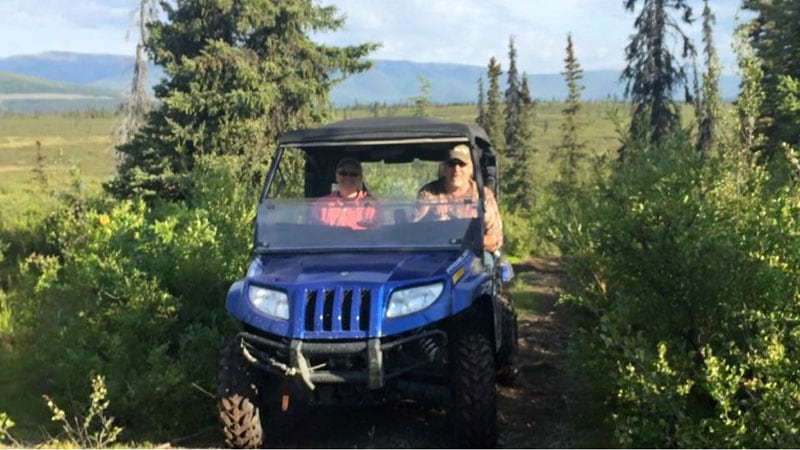
Before planning your trip to Alaska think about your primary goals. Where do you want to travel and what sights do you want to see? What are you looking to do along the way? Do you want to kayak to a glacier? Do you want to fish? Do you want to hike mountain trails? Travelers should approach trip planning differently based on what they want to do in Alaska.
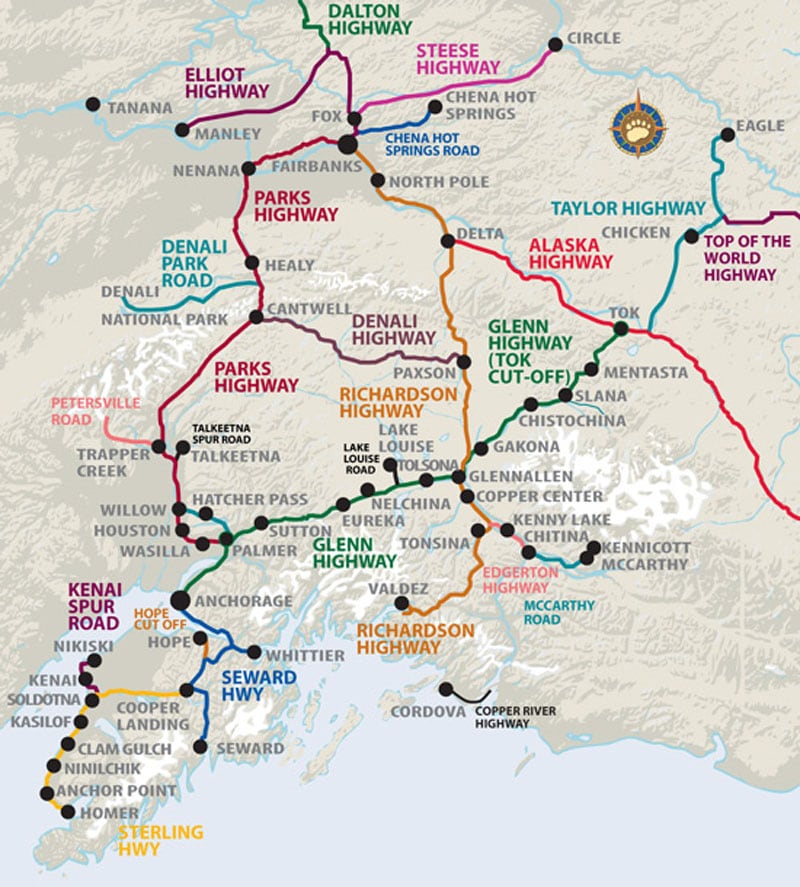
Above: Alaska Map with Road Names, courtesy of Bearfoot Alaska Maps
If I were a tourist from the Lower 48 or Canada, I would come into Alaska as early as possible in May, and I would travel the following route:
Enter Alaska via the Alcan to Tok. Then go south on the Tok Cut-Off road to the Richardson Highway. Continue south to Valdez.
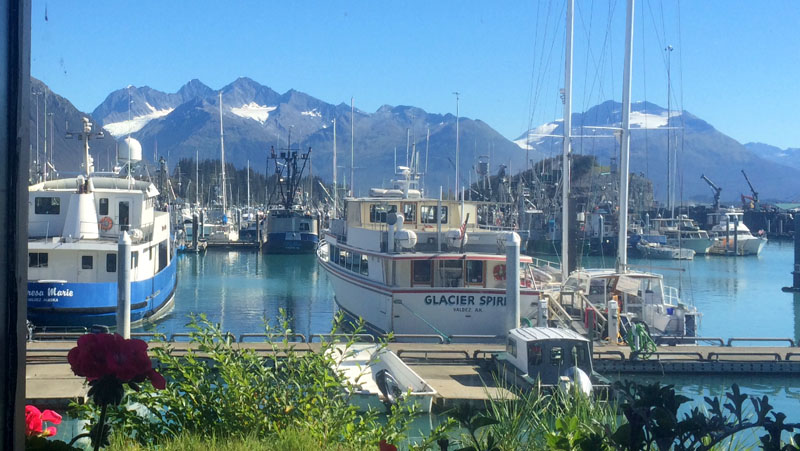
Above: View out a restaurant window looking at the Valdez Harbor
From Valdez go north to the Glenn Highway junction in Glennallen. Then go south to visit Anchorage. Get on the Seward Highway south and make your way to Homer via the Sterling Highway.
Leaving Homer, go back up the Sterling Highway to Cooper Landing and travel south to Seward. Leaving Seward, travel north to Palmer and take the Parks Highway north to Cantwell.
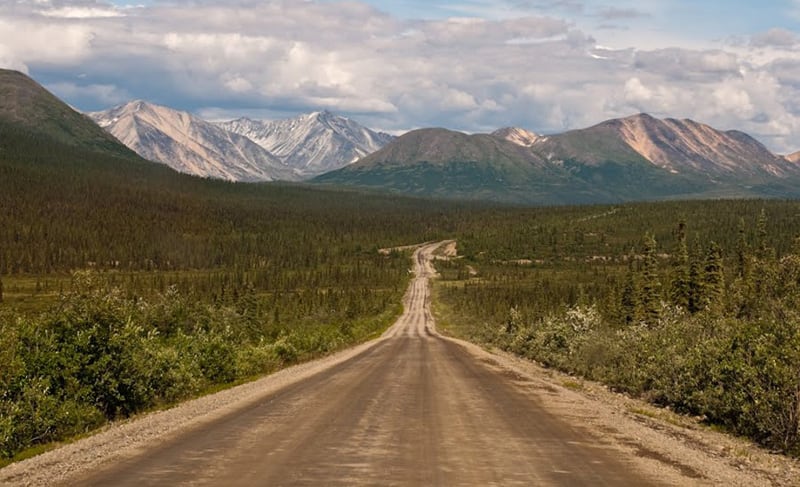
Above: Denali Highway, 114 mile gravel road
You can visit Denali National Park at this time or turn east on the Denali Highway. This is a 114 mile gravel road with spectacular scenery.
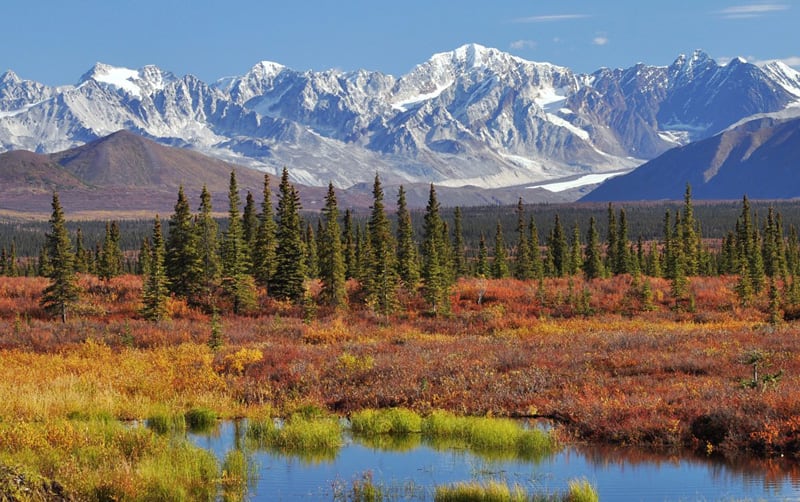
Above: Scenery along the Denali Highway, Alaska
Once in Paxson, travel north onto the Richardson Highway to Fairbanks. For those with a sense of big adventure, the Dalton Highway will take you to Deadhorse and Prudhoe Bay.
Returning from the Dalton Highway via Fairbanks reconnect with the Richardson Highway at Delta Junction. Then travel towards the Alcan for access to the Yukon Territories.
There are some things that you will want to make reservations for in advance. If you want to go halibut and salmon fishing with a charter company, you definitely want to call ahead and make a reservation. Charter fishing is available from Fairbanks along the Parks and Richardson highways all the way south to the Kenai Peninsula.
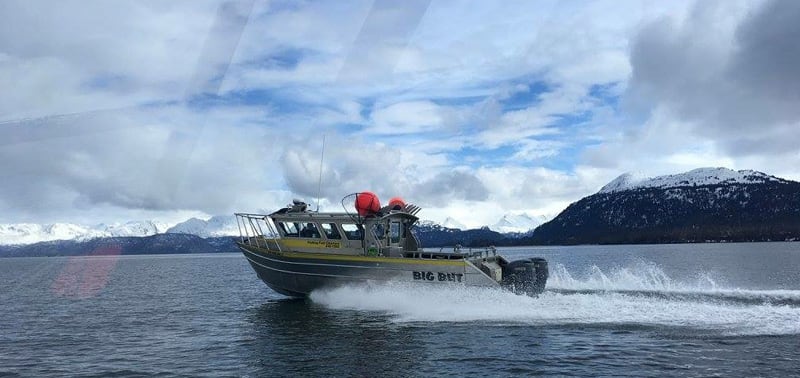
Above: Tom’s buddy, Jeff has a halibut and salmon fishing charter service down in the Kenai. The picture above is a clamming trip down in the Kenai Peninsula. He takes six people across the Cook Inlet, sits and waits for the tide to recede and then unloads everyone to go and dig up clams. When the tide begins to rise he gets everyone loaded and they wait until the boat floats and heads back to home base in Ninilchik.
You should also reserve a campground near the fishing destination or with your charter fishing company. Often times the charter fishing company can refer you to a nearby camping location. For the most part this really applies to the Kenai River areas during the big sockeye salmon runs. Most other places have ample camping, boondocking and/or dry camping available. It’s always safe to call ahead if you’ve planned a charter.
Denali National Park is a place you are going to want to make a reservation. Spaces fill up fast all summer. If you want to go on a tour or camp in Denali, make a reservation months ahead of your arrival.
If you want to travel the Alaska Marine Highway system, make a reservation on their website. Do not arrive at an Alaska Marine Highway dock without reservations.
It is easy to find places to camp because there are many pull-offs. I can only think of two locations in all of Alaska where there are signs that state no overnight camping. There are so many small roads to investigate. That’s how we have found good camping spots.
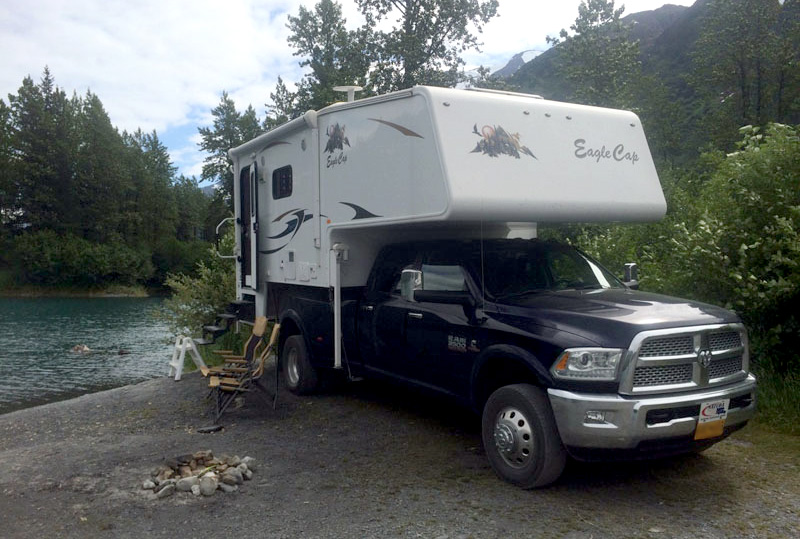
Above: A favorite boondocking spots in the Portage Valley
You’ll see many spots along the way where people just pull off and set up camp. Some of our favorite locations are free, scenic, and have recreation opportunities.
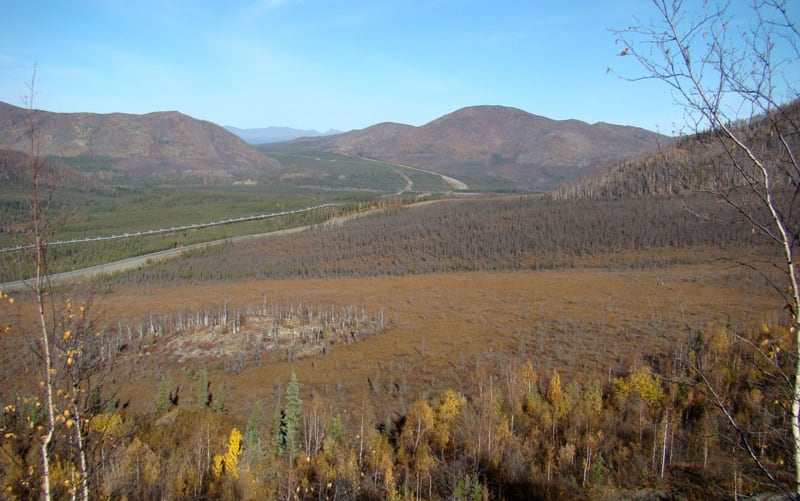
Above: Camping along the Dalton Highway, Alaska pipeline in the distance
The Richardson and Dalton Highways along Alaska pipeline have access roads. Access to the Alaska pipeline itself is gated, but the access roads to the gates are plenty wide and you’ll see where many have overnighted in those locations. Do not block the gate entrances. You will see fire pits in areas where others have camped.

Above: A small herd of Musk Ox along the Dalton Highway
The trip across Denali Highway has lots of pull-offs with awesome views along state and private camping. Wildlife sightings are good on this stretch along with remote and quiet fishing opportunities.
If fishing is your primary goal in your travels, visit the Alaska Department of Fish and Game website. There is fishing along the entire Alaskan road system.
Monitor the salmon run charts from previous years as well as the current run status so that you know what areas are doing the best. Of course you’ll have to take advantage of this when you are within cellular range.
Be sure to get a copy of the fishing regulations for the region to ensure you stay on the right side of the law. It doesn’t matter how remote you think you are, the fish and game troopers are everywhere. Trust me on this. I have met them in the middle of nowhere on my ATV.
Road construction during the summer months in Alaska is for real. Often you won’t know about it until you’re upon it. If you are on a schedule, I guarantee that road construction will throw you off. There are massive road projects in Alaska where you might wait twenty-minutes for the pilot vehicle to take you through rough terrain to the highway again. Plan on construction delays.
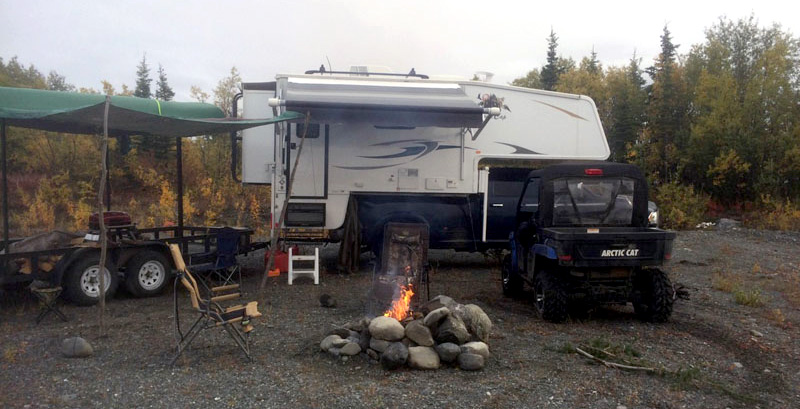
Above: Lake Louise Road, fishing remote lakes, exploring, and relaxing
Doreen and I spend a lot of time in the Lake Louise area either fishing or with the side-by-side exploring remote lakes. There are lodges and a state campground on the lake with services.
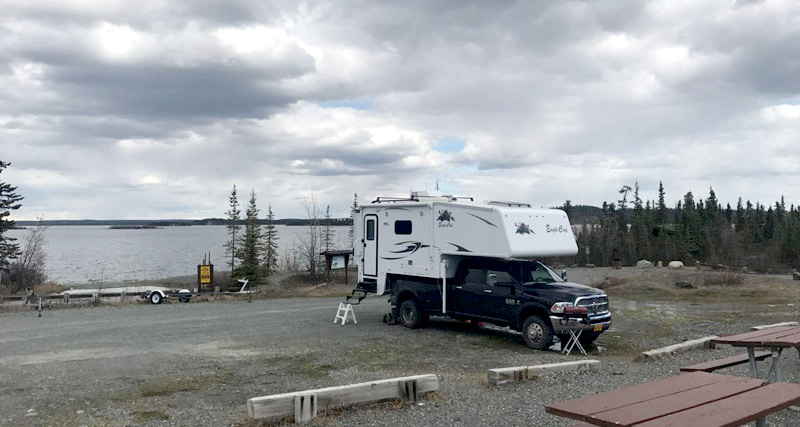
Above: Camping at the end of 20 Mile Road from Glenn Highway, be aware of bad frost damage
A word of caution on this location. The twenty-mile road to get to Lake Louise from the Glenn Highway has very bad frost damage. The drive is long and keeps a lot of people away, but it’s worth checking out. Just go slow.
Every highway you encounter in Alaska is going to have some sort of damage. Be prepared, watch your speed and look ahead for evidence of frost heaves.
I know where a lot of frost heaves are on primary roads, but there’s always a new one that pops up. Fortunately the Alaska highway system does well at flagging them.
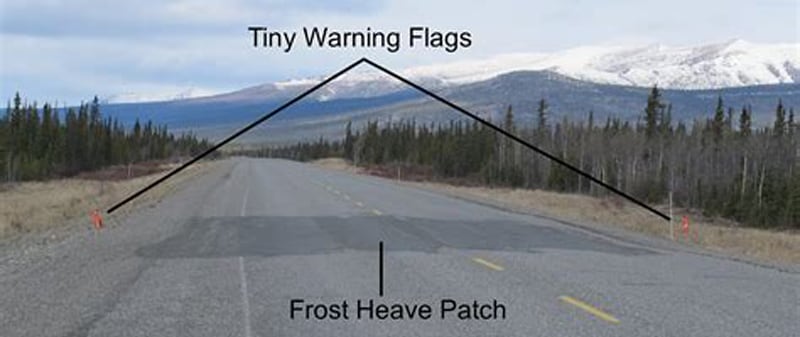
The Alaska highway system marks the beginning and end of frost heave areas with orange flags. Pay attention to those and be prepared to slow down.
Here’s another tip to spot frost heaves. We have a lot of tractor trailer traffic in Alaska. Due to the length of the tractor trailer, they often times leave tire black marks on the highway just before or after the frost a heave. I pay attention to the skid marks on the road. On the Glenn Highway, there is one in particular that you will see a half mile down the road.
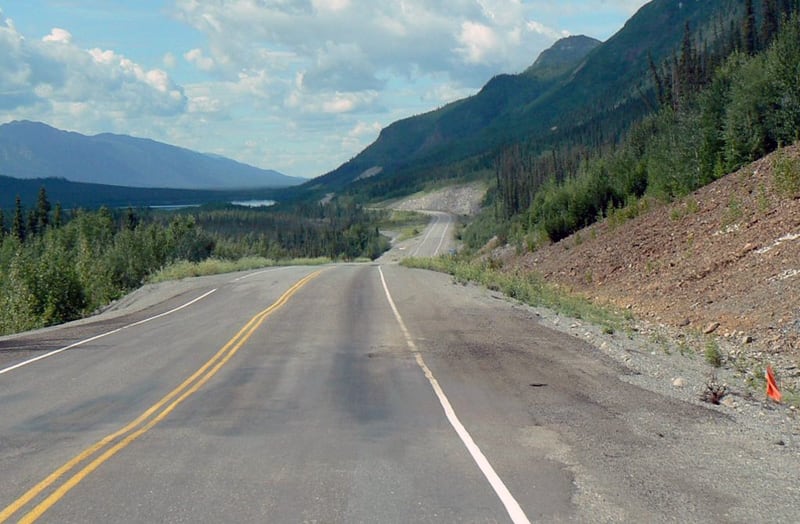
Watch for the frost heave flags and skid marks. Even with these strategies, I sometimes still hit them by surprise. Pay attention.
Before people come to Alaska they will stock up because they are worried about availability of groceries and other supplies.
Groceries and goods are available just about everywhere in Alaska. In Fairbanks and Anchorage you will get more reasonable prices. When you’re away from those areas, things will be higher in price, but they are still available.
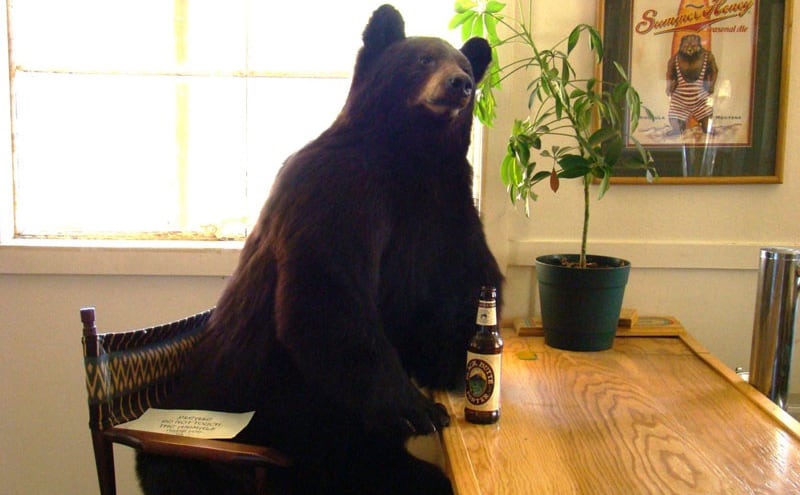
If your thing is a good micro-brewed beer, it will be available in some of the most unique locations along the highway system. There are a lot of breweries up here. Roadhouses and lodges along the way carry good samples of what Alaska has to offer.
Anchorage is unique place that people may try to avoid. Anchorage does an awesome job with tourism and makes it easy for tourists to get around and explore. There is a Saturday market with local Alaskan art and cultural goods. There is ample parking for RVs. Anchorage also has a unique fishery right in the middle of the city.
You can fish for fresh sea-run salmon on Ship Creek, under the backdrop of city buildings and the Alaska Railroad. It’s a block from the ceremonial starting line of the Iditarod sled dog race with fine dining right along the creek.
Speaking of fine dining, fine dining in Anchorage is very good. One of the popular stops of most visitors is the Moose’s Tooth restaurant. It has hand crafted pizzas, great beer and other local specialties on their menu. There are a lot of places in Anchorage with great food.
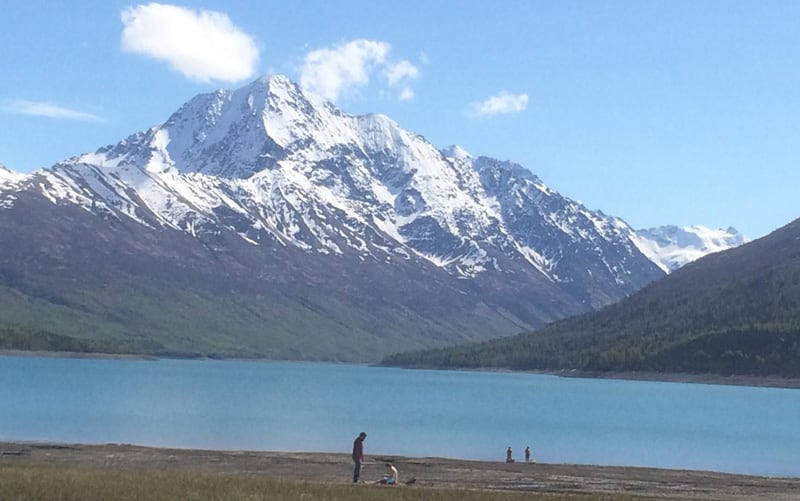
Above: Eklutna Lake is just outside of Anchorage
There are RV campgrounds in Anchorage, but I would not want to camp in the city. I would travel down the Seward Highway a short ways and find a picturesque place to camp for the night. Then drive back into town in the morning.
If you have access to military camping, Joint Base Elmendorf-Richardson has Fam-Camps as well. I hope you don’t avoid Anchorage because of its size. It’s a cool place with a lot to see and experience.
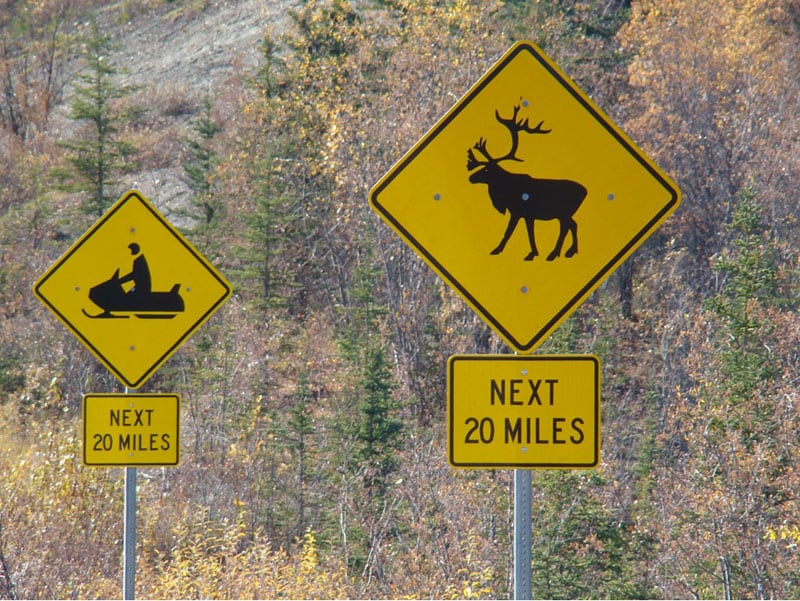
Above: Typical signage along Alaskan roadways
Tourists are in awe of the beauty of Alaska and the locals understand that. We have a beautiful state but, as you are looking through the windshield, you are most likely driving slower than the posted speed limit. Locals will become inpatient and start passing. Unfortunately, that leads to many accidents.
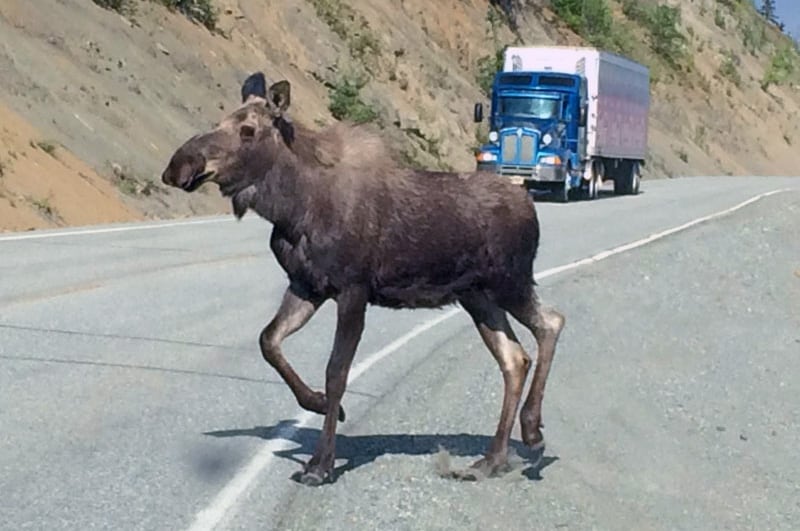
Above: One of the road hazards associated with travel along Alaskan highways. This Moose was on the Glenn Highway at the 86 mile marker along Long Lake.
Over the last ten to fifteen years the Alaska Highway system has increased the number of passing lanes along the highways. Driving the Seward Highway south of Anchorage, you follow the water’s edge to the Kenai Peninsula. They don’t have a lot of room to expand that road, so it is quite dangerous.
In the state of Alaska, it’s against the law to delay more than five vehicles at a time on most highways. You must use a designated pull-out and allow the faster moving vehicles to pass you.
The Alaska Department of Transportation has information for travelers that shows the condition of each highway and where the construction projects are located. If you mouse over the construction symbol on the map it will tell you the exact mile marker and how long the delays can be.
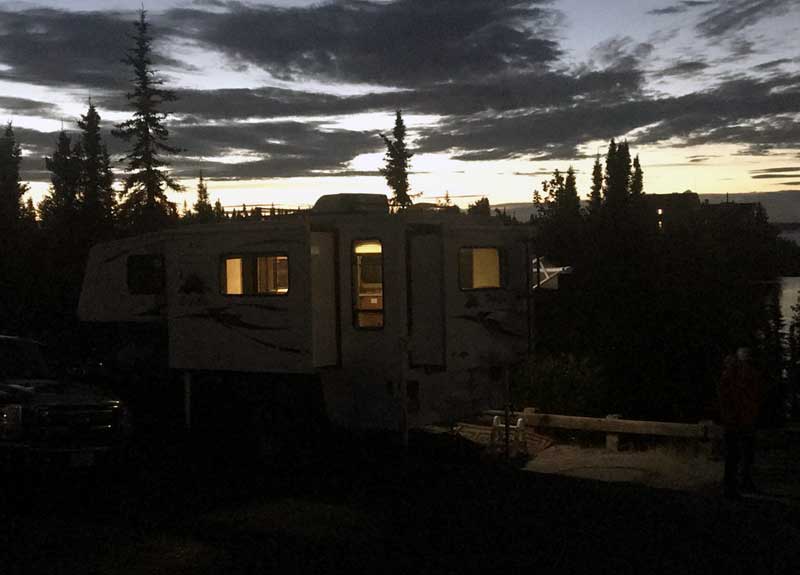
For more information about traveling to Alaska, visit our Alaska and Canada sections.
